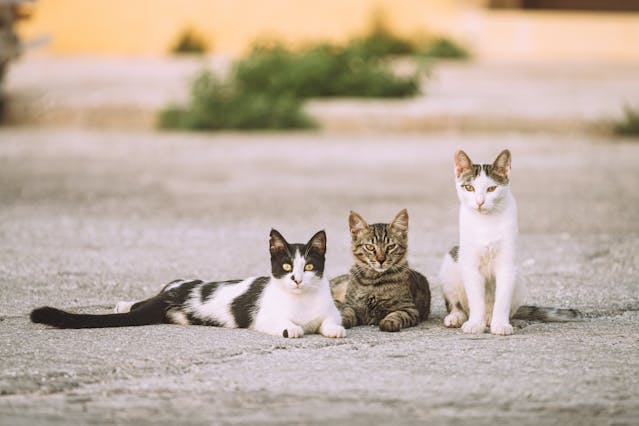When it comes to the health of our beloved feline companions, nothing can be too challenging. Cats can be notoriously finicky eaters at the best of times. Add illness into the mix, and you might find yourself with a kitty who is refusing to eat altogether. In such dire circumstances, it might be necessary to take measures into your own hands and resort to syringe-feeding. This article will explore the proper method for syringe-feeding a cat, offering practical advice for pet owners in this tough situation.
Understanding the Importance of Eating and Hydration for a Sick Cat
Just like humans, cats require sustenance and hydration to facilitate recovery when they are sick. Your pet may not feel like eating or drinking due to a loss of appetite, nausea, or other illness-related reasons. However, it’s vital for survival and recovery that your pet continues to receive nutrients and water.
Avez-vous vu cela : How do you prepare for the arrival of a Sphynx cat, taking into account their unique skin and temperature sensitivity?
When a cat does not eat for several days, it may develop a life-threatening condition known as hepatic lipidosis or “fatty liver disease.” As such, it’s crucial for pet owners to encourage their cats to eat during illness, even if that involves syringe-feeding.
Preparing for Syringe-Feeding
Before you begin the process of syringe feeding your cat, it’s essential to gather the necessary supplies and prepare a comfortable space. You’ll need a small syringe, a towel, your cat’s regular food (in a liquid form), and lots of patience.
Sujet a lire : What are the key considerations when selecting a cat from a shelter or rescue to ensure a good match?
Your veterinarian will likely recommend a specific type of liquid diet for your cat, but if not, you can puree your cat’s regular canned food with some water to create a liquid consistency that can be drawn up into a syringe. It is important to note that dry food should not be used for this purpose since it will not blend smoothly and could cause a choking hazard.
The Syringe-Feeding Process
When it comes to the actual feeding process, it’s important to approach your cat calmly and gently. Start by wrapping your cat snugly in a towel, leaving only the head exposed. This will help to calm your pet and prevent them from squirming too much during feeding.
You’ll then need to load the syringe with the liquid food. Hold the syringe in one hand while using your other hand to gently open your cat’s mouth. Insert the syringe into the side of the mouth, between the teeth and the cheek, and slowly depress the plunger.
The speed at which you press the plunger is important. If the food is delivered too quickly, your cat might choke or aspirate the food into their lungs.
Monitoring Your Pet’s Condition
While syringe-feeding your cat, it’s crucial to monitor their condition closely. Look for signs of discomfort or distress, such as gagging, choking, or trying to escape. If any of these occur, stop feeding immediately and consult with your vet.
It’s also important to keep track of how much your cat is eating. Your vet will likely give you a target amount to aim for each day, so make sure you’re meeting this target.
Ensuring Proper Hydration
Just as crucial as food, is the provision of adequate water for your sick pet. Cats typically get their water from their food, so if they’re not eating, they’re likely dehydrated as well.
You can use a syringe to provide water to your pet, just as you did with food. But remember, it’s important to deliver the liquid slowly to prevent your cat from choking. If your cat is severely dehydrated, your vet may recommend administering subcutaneous fluids, which are delivered under the skin using a needle and a bag of sterile fluid.
In conclusion, while it can be distressing to see your pet refuse to eat, there are methods to ensure they receive the nutrients they need. Syringe-feeding may be a daunting task, but with patience and care, you can help your sick kitty on the road to recovery. Remember, always consult with your veterinarian before trying any new feeding method with your sick cat. These are professionals who can provide you the best advice tailored specifically for your pet’s condition.
Using a Feeding Tube as an Alternative
When syringe feeding isn’t successful or possible due to the severity of the cat’s condition, a feeding tube may be recommended by your veterinarian. Feeding tubes allow for a more comfortable and less stressful way to provide the necessary nutrition to your sick cat.
There are different types of feeding tubes, and the choice depends largely on the cat’s condition and the length of time the cat will need supportive feeding. Nasogastric tubes are inserted through the nose and into the stomach. While these tubes are less invasive, they’re only suitable for short-term use. For long-term feeding support, esophagostomy tubes, inserted into the esophagus through a small incision in the neck, or gastrostomy tubes, placed directly into the stomach, may be used.
Feeding tubes may seem daunting to pet owners, but they can be a lifesaver for cats who won’t eat. The tube allows you to deliver a liquid diet directly to the cat’s stomach, bypassing the need for force feeding. It’s also a practical option for administering medications that your cat may refuse to take orally.
Dr. Jennifer Coates, a renowned veterinary advisor, urges pet owners to consider this option if advised by their vet. Tube feeding can provide the necessary nutrients and hydration needed for your cat’s recovery while reducing stress for both you and your pet.
Looking After Your Cat Post-Feeding
Post-feeding care is as crucial as the feeding process itself. Once you’ve finished syringe feeding or tube feeding your cat, be sure to clean any leftover food around their mouth with a soft, warm cloth. This will prevent skin irritation and infections.
Monitor your cat for a while after feeding. Make sure they are comfortable and not attempting to vomit. If you observe regurgitation or any other concerning signs, contact your vet immediately.
And don’t forget to offer plenty of love and affection. Illness can be a frightening time for your pet, so some extra cuddling and soothing words can go a long way towards making your cat feel secure and loved.
Conclusion: The Road to Recovery
Feeding a sick cat who refuses to eat can be one of the most challenging tasks a pet owner faces. However, with the right tools and techniques, such as syringe feeding or utilizing a feeding tube, you can provide the nourishment your cat needs to help them recover.
Remember, the goal is not just to make your cat eat, but to aid in their overall wellness and regain their strength. Always consult with a professional veterinarian to make sure you’re using the best method for your pet. With patience, love, and proper care, your sick cat can return to their normal, playful self.
Keep in mind that the journey to recovery may be long and may test your patience. But the reward of seeing your furry friend healthy and happy again far outweighs the challenges. The most important thing is not to lose hope. Because with every syringe of food, with every feeding tube procedure, with every sip of water, you’re giving your cat a fighting chance against their illness.
















